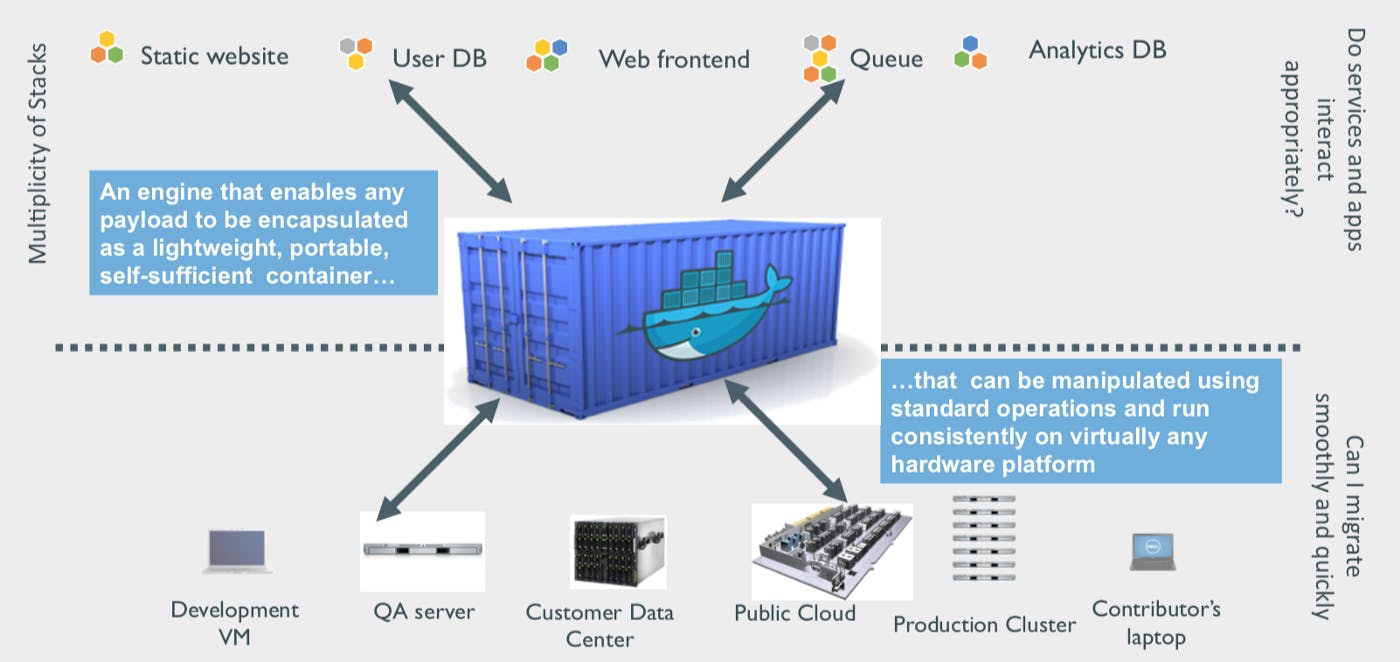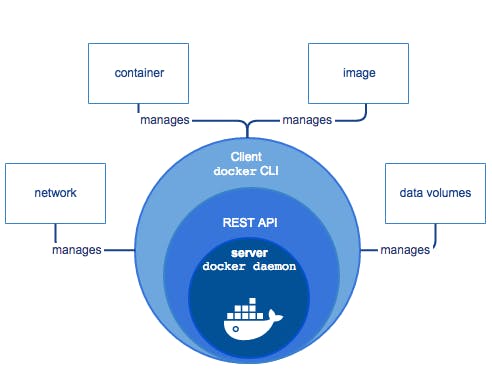What is docker?
Docker is a platform that allows developers to create, deploy, and run applications in a containerized environment. Containers are lightweight, portable, and self-sufficient, making them an excellent solution for developing and deploying applications.
In simple terms, Docker is a tool that helps you package an application, with all its dependencies and libraries, into a single container that can be easily deployed and run on any system that supports Docker.
How does docker work?
To understand how Docker works, let's take a simple example of a web application. A web application typically requires a web server, a database, and some code to run. To deploy this application on a traditional server, you would need to install the web server, configure the database, and copy the code to the server. This process can be time-consuming and error-prone.

With Docker, you can package the web server, database, and code into a single container. This container can then be easily deployed and run on any system that supports Docker. This container includes all the necessary dependencies, such as the web server, database, and code, so you don't have to worry about configuring anything on the host system.
How does containerization work?

An application on a VM requires a guest OS and thus an underlying hypervisor to run. Hypervisor is used to create multiple machines on a host operating system and it manages virtual machines. These virtual machines have their operating system and do not use the host’s operating system.
When you run an application in a container, it is isolated from the host system and any other containers running on the same system. This means the application can run on any system supporting Docker, regardless of the underlying operating system. This makes it easy to deploy and run applications in different environments, such as development, testing, and production. VM is hardware virtualization, whereas containerization is OS virtualization.
Docker Architecture

At the heart of Docker's architecture is the Docker engine, which is responsible for building, running, and managing containers. The Docker engine is composed of several components, including the Docker daemon, the Docker CLI, and the Docker API.
Docker daemon
Docker daemon is the core component that runs on the host operating system and is responsible for managing the containers.
Docker CLI
Docker CLI is a command-line tool that allows you to interact with the Docker engine and manage the containers.
Docker API
Docker API is a RESTful API that allows third-party applications to interact with the Docker engine.
Docker Registry
Docker also has a registry, which is a central repository for storing and sharing Docker images. The Docker Hub is the default registry that comes with Docker, but you can also use other public or private registries.
Dockerfile
To create a Docker container, you would first create a "Dockerfile," which is a file that contains instructions on how to build the container. This file would include instructions such as which base image to use, which ports to expose, and which environment variables to set. Once the Dockerfile is ready, you can use the "docker build" command to build the container.
FROM ubuntu
MAINTAINER Nikhil Chauhan <nikhil@gmail.com>
WORKDIR /app
COPY . /app
RUN apt-get update
CMD [“echo”, “Hello World”]
Once the container is built, it can be easily deployed and run on any system that supports Docker. This can be done using the "docker run" command, which starts the container and makes it available to the host system.
Docker Image
A Docker Image is a file that contains the definition of a Docker Container. A container that moves from one Docker environment to another with the same OS will continue to function normally because the image contains all of the dependencies required to run the code. Docker Image is used to create a Docker container. Once built, images cannot be changed.
Docker Compose
Docker Compose is a tool for creating and running multi-container Docker applications. It is used to define the services that comprise an application, as well as the network connections that connect them and any other dependencies they may have.
You can define a multi-container application with Docker Compose by using a YAML file called a "docker-compose" file. This file describes the application's services, such as web servers, databases, and message queues, as well as the network connections and environment variables required to run them.
How do we manage a large number of running containers?
That's a great question. It is difficult to manage multiple containers. For this, we use a container orchestration system like Kubernetes, Docker swarm, Amazon ECS, etc. It helps in automating application deployment, scaling, and management.